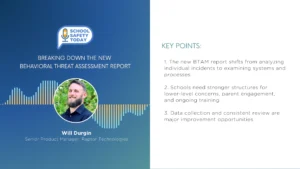The Online Learning Minute: What Makes a Good Online Learning Video?
Welcome back to the Online Learning Minute at Marketscale, I’m your host, Brian Runo, and today I’m going to talk about what makes an excellent online learning video.
Some people think that recording a lecture and then putting it up online is a good way to present knowledge in online learning. But because we have so much time to create content before the course goes live, we can and need to take that time to create high quality videos that are engaging and transfer the knowledge in a manner better suited to learners.
The first aspect we use is called “chunking”, simply put, chunking is dividing up the videos in a course to be highly topic specific and ensuring that the content is in short, digestible pieces. We do this by scripting out and storyboarding all videos that will be placed within the course and ensuring that the vides remain between 2-8 minutes in length. Any longer than 8 minutes, the attention of the learner diminishes rapidly, and anything that would be shorter than 2-minutes could be a simpler piece of content like a Podcast, graphic, or a written piece.
Next, making the video engaging requires the presenter to be learner-facing, meaning that we shouldn’t see the presenters back like in a lecture hall. There’s a lot of different ways to make a video engaging. You could have some extreme product testing if you’re in manufacturing, you could have a documentary-style video that people would watch like they would a TV program for higher impact processes, even something as simple as having the instructor as a talking head while drawing on the screen lightboard style can create an engaging video.
You don’t need to have a super-expensive cinematic production to create an engaging and informative online learning video. The possibilities are truly endless.








